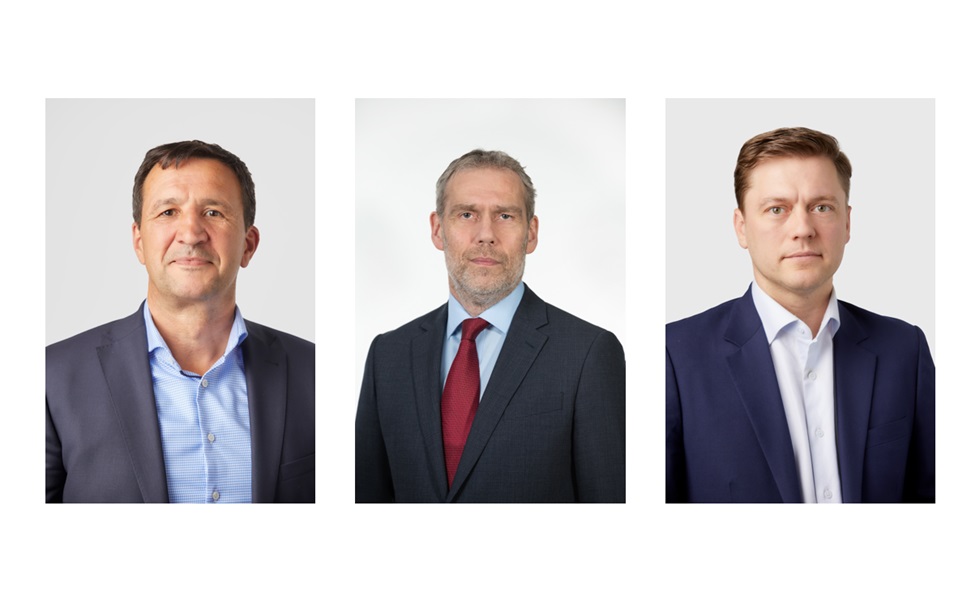LGIM: Setting standards - ESG euro credit
LGIM: Setting standards - ESG euro credit

LGIM’s recent launch of its actively managed L&G ESG Euro Credit Fund is in response to demand from institutional investors to standardise the investable credit universe, based on ESG metrics.
By our editorial team
The euro credit market has grown steadily in the past few decades, helped by the ECB’s ability to buy corporate bonds several years ago. LGIM has been active in this market since 2007. The asset manager believes the launch of its new ESG-focused euro credit fund fills a requirement to make funds with more stringent ESG mandates available to a wider proportion of institutional investors.
The newly launched ESG euro credit fund is co-managed by Marc Rovers, Head of Euro Credit Portfolio Management, and Connor Olvany, Portfolio Manager, European Credit – both based at LGIM’s headquarters in London.
This new fund will be made available in the Netherlands through the Amsterdam-based LGIM institutional team, headed by Marcel Linotte.
The fund aims to provide long-term returns through a combination of income and capital growth, while maintaining a lower weighted average carbon intensity than the broader European investmentgrade credit universe.
Why do you believe this is the right time to launch an ESG euro credit fund?
Rovers: ‘LGIM is a leading asset management firm[1] when it comes to responsible investing. Analysing the governance part of environmental, social and governance factors has always been a key factor in our investment process. The major defaults that happened in the euro credit market in the past were typically the result of a failure around governance, so we believe extra scrutiny around this is crucial. We believe the new fund also fits well within our existing stable of products. The amount of assets under management we aim to be aligned to net zero by 2030 is 70%.[2] We believe this fund will go some way towards helping us achieve that.’
What are the key differentiating features of the fund?
Olvany: ‘The fund aims to have a higher ESG threshold for what, we deem, is an appropriate investment. That means we won’t invest in certain products, or sectors, such as tobacco, gambling, and fossil fuels.
We believe our clients also want to see a clear standard when it comes to business involvement and potentially controversial activities, across all of their investment portfolios.
Furthermore, criteria for companies are more stringent. For example, while utility companies can be included in the portfolio, they will only be included if no more than 5% of the electricity generated is from non-renewable sources.
Additionally, we have increased our minimum standards relating to ESG controversies, scores, and policies. To apply our ESG investment process, we utilise both MSCI ESG data and our own proprietary analysis and feedback from engagement with companies.’
What is the benefit of using MSCI data?
Linotte: ‘The fund is benchmarked against the iBoxx MSCI ESG EUR Corporates Index, which enables us to compare our active performance within a more restricted, more sustainable universe, on a like-for-like basis. We believe our clients also want to see a clear standard when it comes to business involvement and potentially controversial activities, across all of their investment portfolios. MSCI ESG offers such a standard, excluding certain activities and issuers from this benchmark, and from client portfolios in a consistent way. There will always be different opinions on controversies.
Volkswagen[3] is as an example because of current concerns with regards to working conditions at its factory in China. While the company is permitted for investment by some ESG data providers, the bonds are currently not investable according to the MSCI ESG screen.’
You use a ‘controversy screen’, based on your own engagement with companies? What does that entail?
Olvany: ‘We actively engage with all the companies in which we invest, or are considering investing in. We want companies to have clear targets around climate change. This is also true for companies such as those found in the cement industry, and which have a high carbon footprint. We engage with these types of companies to provide us with details about the transformation they are making towards a lower carbon footprint. Where companies don’t engage, we use our range of stewardship tools to try and aim to influence a better outcome.’
We want companies to have clear targets around climate change.
Are there sufficient corporate bonds in which to invest?
Olvany: ‘There are over 700 issuers represented in the iBoxx EUR Corporate Bond Index[4]. When we apply our ESG criteria, there are still over 500 eligible issuers and close to 3,000 bonds. We believe that’s plenty for an actively managed, diversified portfolio, which will consist of over 200 different bonds through which we can express different investment themes.’
Will the use of more stringent criteria mean the expected return is lower?
Olvany: ‘We don’t believe using strict criteria will make a material difference to our overall total returns. The duration of the bonds is approximately 4.5 years, which is comparable with our existing euro credit fund. Yields on both of those funds currently stand at over 4.5%.’[5]
Rovers: ‘In the case of the new fund, we use an MCSI ESG benchmark provided by iBOXX. We aim to outperform that benchmark because of what we believe is our rigorous investment approach.’
Olvany: ‘Although we use the iBOXX benchmark, with MSI ESG data, it doesn’t mean that we take the benchmark as our starting point. We follow the same investment approach as for all our actively managed funds.’
There’s been a lot of talk of greenwashing around ESG funds. How do you react to that?
Rovers: ‘I often say jokingly that there’s a good reason why we have ‘Legal’ in the name of our firm. We believe we have been cautious from the start in how we classify our funds. All our SICAVs are classified as Article 8. This classification means that we actively promote environmental and social characteristics.’
Where do you see demand for this type of product?
Linotte: ‘The demand for sustainable investing has risen over the years and comes with many specific objectives, in varying forms, across a wide range of investors. Our clients appreciate the strong credit capability and ESG credentials of our firm. With this fund we believe we can offer clients, in our key markets, a pooled solution that invests in a more sustainable universe. Furthermore, we believe we can improve the environmental, social and governance profile of clients’ European corporate bond exposure, while seeking to maintain return and performance objectives.’
[1] Source: LGIM ranks #3 of the world’s largest asset managers across responsible investment themes, and as one of only 5 managers to be ranked in the top category (A). Source: Point of No Returns: A ranking of 75 of the world’s asset managers approaches to responsible investment, ShareAction, March 2020 (https://shareaction.org/research-resources/point-of-no-returns/).
[2] Source: LGIM’s Active Ownership report, 2022.
[3] For illustrative purposes only. Reference to a particular security is on a historic basis and does not mean that the security is currently held or will be held within an LGIM portfolio. The above information does not constitute a recommendation to buy or sell any security.
[4] Source iBoxx EUR Corporate Bond Index as at 30 September 2023.
[5] Source: Bloomberg as at 18 October 2023
|
SUMMARY LGIM’s new Euro Credit Fund fills a requirement to make funds with more stringent ESG mandates available to a wider proportion of institutional investors. Demand for sustainable investing has risen over the years. The new fund will help LGIM to achieve its aim of aligning 70% of assets under management to net zero by 2030. |
|
Key risk warnings For professional clients only. Not to be distributed to retail clients. This is a marketing communication. Please refer to the prospectus of the fund and to the key investor information document before making any final investment decisions. The value ofinvestments and the income from them can go down as well as up and you may not get back the amount invested. Past performance is not a guide to future performance. The Information in this document (a) is for information purposes only and we are not soliciting any action based on it, and (b) is not a recommendation to buy or sell securities or pursue a particular investment strategy; and (c) is not investment, legal, regulatory or tax advice. There is no guarantee that any forecasts made will come to pass. Please refer to the prospectus of the fund and to the key investor information document before making any final investment decisions, these can be found on www.lgim.com. |










